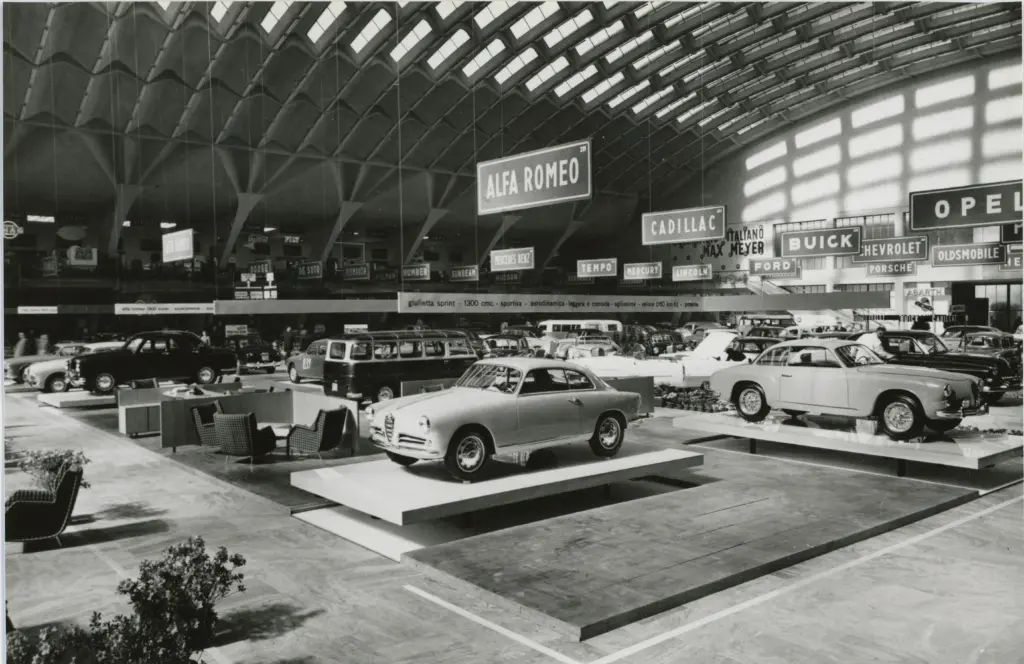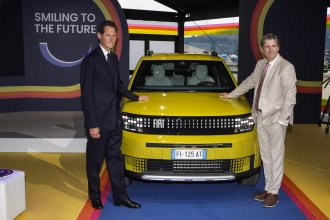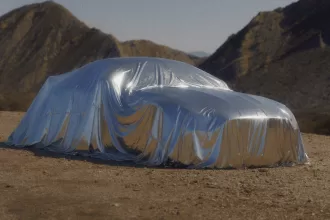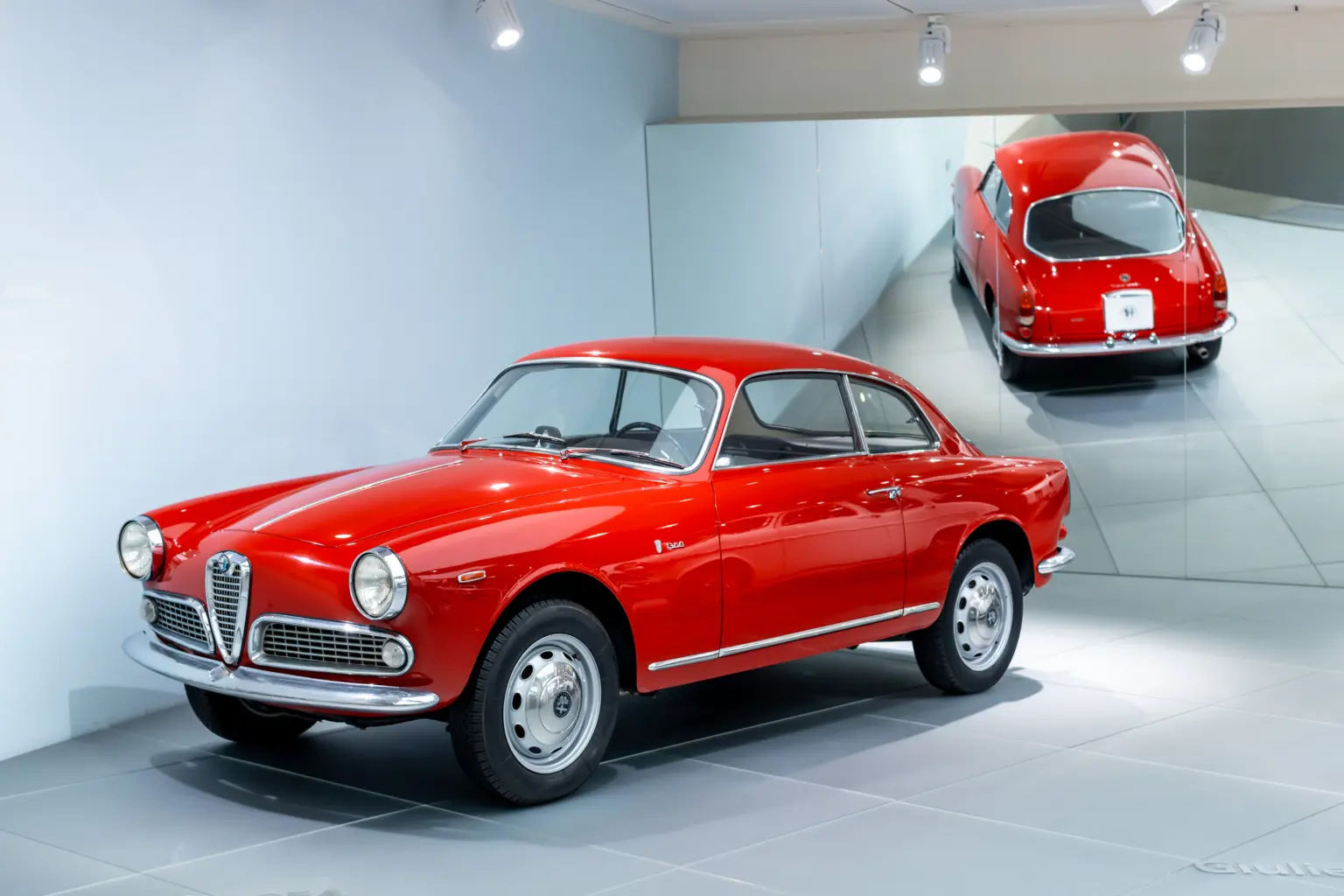- Unveiled in its Sprint version at the Turin Motor Show on April 21, 1954, the legendary Alfa Romeo Giulietta – “la fidanzata d’Italia” (‘Italy’s sweetheart’) – is now 70 years old
- The Alfa Romeo Centro Stile has created a specific logo to celebrate its anniversary. Official event the first weekend of June at the Arese Museum, with a parade, a Backstage conference, and a special exhibition
- The “Registro Italiano Alfa Romeo“ will be arranging a procession of 70 cars from Lake Garda to Arese, via Juliet’s House in Verona. A dedicated category in the RealAlfa parade.
Turning 70 this year, the Alfa Romeo Giulietta – “Italy’s sweethearth”– is a model that has made automotive history and remains to this day a benchmark for fans of four wheels.
It was officially unveiled to the public on April 21, 1954, at the Turin Motor Show, in the coupé version only. The Giulietta Sprint immediately struck a chord in the first few days of the Motor Show, when around 2,000 orders were collected, a huge number for that time. Two weeks ahead of its launch, a preview was organized in the courtyard at Portello plant for insiders and authorities: two actors jumped out of a helicopter dressed as Shakespeare’s Romeo and… Juliet.
The Giulietta became “Italy’s sweethearth” as the first Alfa Romeo to take a woman’s name, having quickly won over a public for whom it acted as a symbol of the economic boom. When the 100.001st Giulietta sedan rolled off the production lines at the Portello plant, Giulietta Masina (Federico Fellini’s muse) celebrated this major manufacturing milestone in person; it was the first model from the Milan-based automaker to achieve a six-figure volume.
Centro Stile Alfa Romeo celebrative logo
A leading light in the story of the time, the Giulietta is one of the pillars of the brand’s history. Alfa Romeo has therefore decided to create a special logo to celebrate its 70th anniversary, designed by the Centro Stile to support the various events clubs and enthusiasts have organized all over the world.
Official celebrations at the Alfa Romeo Museum
On Sunday, June 2, the Alfa Romeo Museum will be celebrating the 70th anniversary of the Giulietta with a range of initiatives: at 10.30 a.m. a parade reserved for Giulietta cars, followed at 11 a.m. by a special Backstage lecture organized by the Museum that will focus on its history, with contributions from various speakers and the support of materials conserved by the Documentation Center. That day, the “Giulietta, Fidanzata d’Italia” exhibition will also open at the Museum, retracing the milestones and differing versions of one of the most iconic cars of its era, which transformed Alfa Romeo into a major company in the automotive industry that left an indelible imprint on society, the world of motoring, and the culture at the time. The exhibition has been produced in conjunction with the Registro Italiano Alfa Romeo.

At 12.30 p.m., a second parade will also include the 1977 “New” Giulietta and its later 2010 version.
Registro Italiano Alfa Romeo initiatives
Again on Sunday, June 2 at the Alfa Romeo Museum, the Italian Alfa Romeo Registry is holding the third edition of RealAlfa, the restoration and conservation competition dedicated to Maurizio Tabucchi. One of the ten categories in the race is reserved for the Giulietta sedan and TI.
That Sunday will also mark the end of the “70th Anniversary Tour” arranged by the Registro Italiano Alfa Romeo: a convoy of 70 Giuliettas will be driven around Lake Garda, with a stop on Friday, May 31 at the evocative Sanctuary of the Madonna della Corona on Monte Baldo. The next day, Saturday, June 1, they will descend the mountain to the old city center of Verona for an unmissable visit to Juliet’s House. That evening, the Giulietta parade will head towards Arese where its cars will take part in the parade on the Alfa Romeo Museum’s track in the morning of June 2.
Giulietta
In the early 1950s, having recently won two consecutive F1 championships with the Alfetta driven first by Farina then by Fangio in 1950 and 1951, the Milan-based brand wanted to produce a model that could sustain production volumes and appeal to a wider audience, without betraying the main features that had already made Alfa Romeo such a success: technology, performance, and style.
The Alfa Romeo Centro Stile set to work and one of its proposals – for the Sprint coupé version – was later developed at Bertone by Franco Scaglione, the same designer as the almost-contemporary “2000 Sportiva,” the later “Giulietta Sprint Speciale” and the wonderful 1967 “33 Stradale.” Bertone would then go on to oversee the construction of the Giulietta Sprint.
The result was a low-slung car with a minimalistic side and a rear with a heavily inclined wrap-around rear window. Its success was immediate and overwhelming.
Alfa Romeo had entered a new competitive arena, of high-performance compact coupés, and would set new technical and performance standards that put it leagues ahead of its competitors. The Giulietta’s engine was a 1290-cc twin-cam four-cylinder made entirely f light alloy (an innovative solution at the time for a mass-produced engine) that drove the car to a top speed of approximately 170 km/h, with performance comparable to cars from a higher category. In its “Veloce” version, the Sprint also won its class at the 1956 Mille Miglia, as well as countless victories on tracks and roads all over the world.
The Sprint was soon joined by several other versions: the sedan; the Spider designed by Pinin Farina with the U.S. market in mind (as for the Sprint, also available in the Veloce version); the Sprint Speciale, also by Bertone; the Giulietta SZ by Zagato. There would also be a station wagon version, named “Promiscua.” From 1954 to 1965, 177,690 Giuliettas were produced in all its variations, testifying to a success and appeal that shows no signs of diminishing over time.









